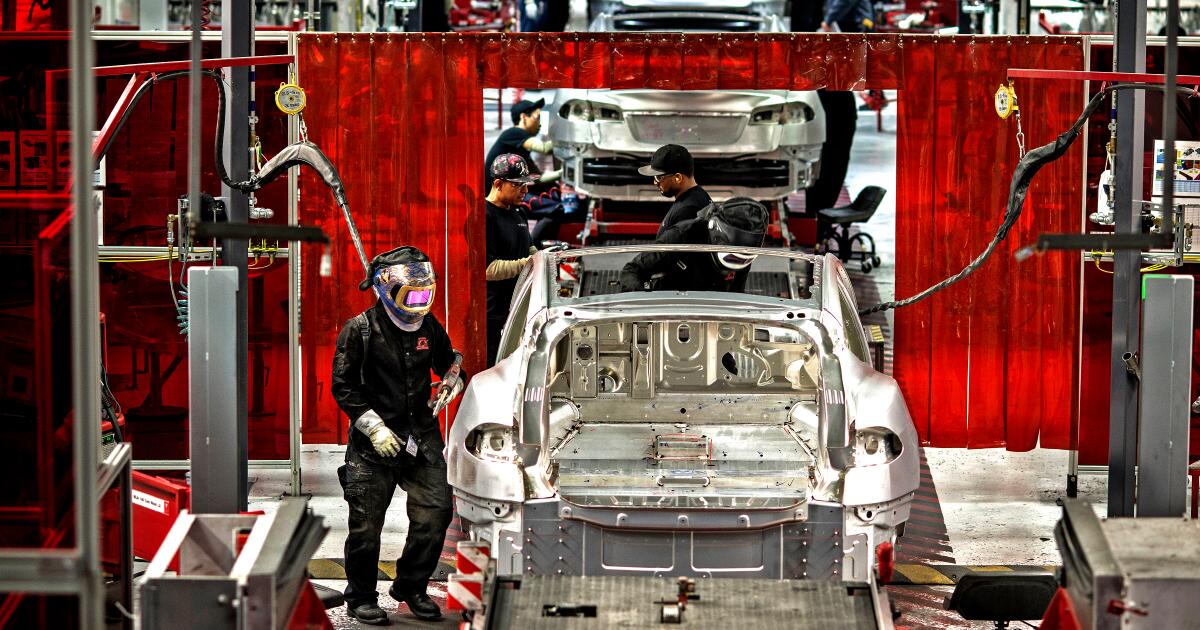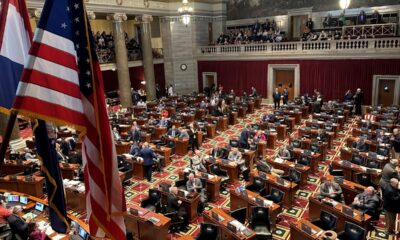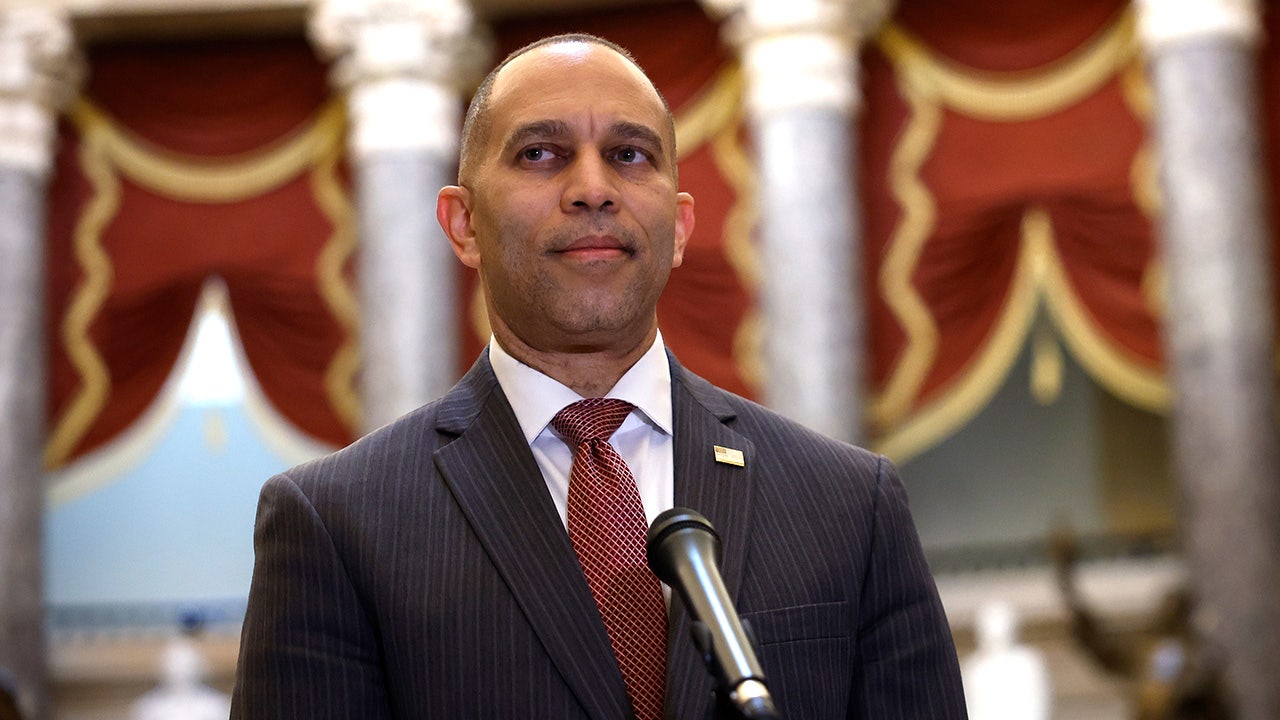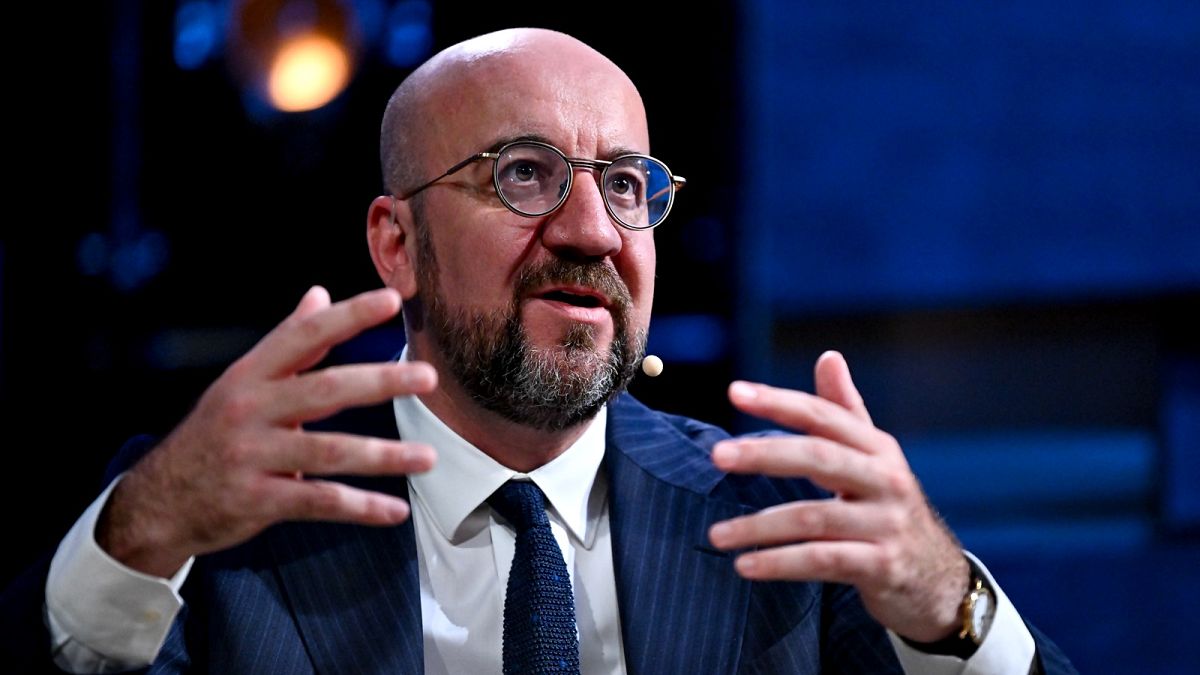Business
MLB ghost kitchens to whip up ballpark food for delivery and pickup, courtesy of IHOP

The concept is curious. Turn 347 International House of Pancakes locations nationwide into ghost kitchens that produce ballpark-themed fast food for delivery and pickup.
Ballpark Bites outlets have sprung up seemingly overnight, 44 in California alone, second only to the 76 in Texas. Maybe that’s how ghost kitchens roll.
Major League Baseball is sponsoring the venture, which mirrors the NASCAR Refuel Tenders & Burgers initiative that also utilizes IHOP kitchens — although regrettably neither menu offers the Rooty Tooty Fresh ‘N Fruity. Already, 524 NASCAR Refuel are in place, and the company motto is (of course) “We’re growing FAST!!!”
Attaching hugely popular, deeply American professional sports to a fast-food venture is the brainchild of Virtual Dining Concepts, owned by Planet Hollywood founder Robert Earl. The company website boasts of 3,000 virtual restaurants, 2,000 restaurants, 6 million orders, and — apparently — counting.
The recipe is simple. Offer what folks typically eat at a ballgame or an auto race for less than the exorbitant prices charged at those venues, slather menu descriptions with a heaping helping of cringe-worthy puns and plays on words, and utilize delivery services to get the grub to couch potatoes glued to their favorite televised ballgame or race.
Like most fast-food chains, the menu at every MLB ghost kitchen is identical, right down to sandwiches served on the same soft pretzel bun. The “starting lineup” offers chicken strip sandwiches, hot dogs, a sirloin tips sandwich and a cheesesteak. A combo plate is called “the triple play” and “the closer” is a ball bucket of doughnut holes tossed in cinnamon sugar.
“We understand that not everyone has the opportunity to visit an MLB or [minor league] ballpark, so we wanted to create Ballpark Bites for fans to enjoy a part of that experience from the comfort of their own home, a local park or even at work,” said Karin Timpone, MLB executive vice president and chief marketing officer.
Reaction on social media and traditional media dings MLB for the sameness of the menus. “You’d think a national organization like MLB would lean into the regional specialties of its ballparks, but nope,” SFGate wrote.
Blowback would be inevitable, however, if attempts to replicate favorites unique to specific ballparks failed — if San Francisco garlic fries or L.A. Dodger Dogs or whatever didn’t taste authentic. Furthermore, most regional ballpark offerings are inferior versions of what is available outside the ballpark, like crab cakes in Baltimore, cheesesteak in Philadelphia, barbecue in Kansas City or deep dish in Chicago.
Who is going to seek out a city’s signature culinary offering from MLB prepared in an IHOP presented by Mastercard?
NASCAR Refuel Tenders & Burgers follows the same script with menu descriptions in overdrive. Choose between Talladega, Hot Lap or Full Throttle tenders, the Daytona Firecracker burger or the Checkered Flag chicken sandwich.
Or, as IHOP views them, revenue fuel.
“Our work with [Virtual Dining Concepts] and the three brands we’re implementing will be a growth driver for our restaurants, specifically as we look at non-peak hours during lunch, dinner and late night,” IHOP president Jay Johns said in a statement. “These new brands are relevant for today’s consumer and perfect for our existing equipment and capabilities in our restaurants nationwide.”
Whether ballpark and racetrack food remains appealing enough off site to support hundreds of locations remains to be seen. If it does, plenty of kitchens are available. As of April 3, 1,699 IHOP restaurants operate in the United States.
The state with the most? California, with 225 locations.

Business
California's strong labor laws aren't enough to protect workers, report says

Although California has some of the toughest labor laws in the country, a new study has found workers routinely suffer violations while on the job.
A team of researchers from UC San Francisco and Harvard University earlier this year surveyed 980 California workers at dozens of the state’s largest retail, food and other service sector companies. The workers reported frequent abuses over pay, work schedules and other issues.
The study found, for example, that 41% of the workers surveyed had experienced at least one serious violation of federal labor in the last year, such as being required to work off the clock, not being paid overtime, or being paid less than minimum wage, according to the report, which was released this week.
Violations around paid sick leave and meal breaks were also common, the researchers found. More than half of workers, 58%, were not given proper rest breaks.
All told, 91% of the workers surveyed experienced at least one violation in the last year, the study found.
The findings seemed at odds with the fact that California has led the way in raising labor standards, said one of the study’s authors, Daniel Schneider, a professor of social policy and sociology at Harvard He and his co-author, Kristen Harknett, a UCSF sociology professor, wanted to understand why the state’s rigorous laws weren’t doing more to protect workers from abuse.
The survey of workers, Schneider said, showed it was common for workers not to report problems. Many, he said, “have been robbed of their time and their wages and the vast majority do not come forward.”
Schneider said the study found that workers who came forward to report problems to someone inside their company were often met with retaliation or other negative consequences, and that workers are unlikely to seek help from regulatory bodies such as the state labor commissioner.
“This is not to say that the laws are ineffective, but that their full promise isn’t realized when they are being violated so routinely,” Schneider said. “We need a robust system of enforcement to ensure these labor laws are being enforced and complied with.”
The results of the new study come against the backdrop of renewed debate over a controversial California law known as the Private Attorneys General Act that gives workers the right to file lawsuits against their employers over back wages and to seek civil penalties on behalf of themselves, other employees and the state of California.
An initiative seeking to gut the act will appear on the ballot in November, the culmination of a long-running effort by business groups to scrap it.
Backers of the ballot initiative argue the law has resulted in a slew of lawsuits that small businesses and nonprofits have little ability to fight, and say that the long, costly lawsuits workers must pursue result in their getting less money than if they had filed complaints through state agencies.
Although not an expert on the law, Schneider said he believes there should be “more avenues for workers to come forward, to pursue some kind of redress, not fewer.”
The recent study is limited in scope, Schneider said, and does not capture the experiences of undocumented workers or those in domestic, agricultural and construction jobs where violations may be even more common.
Since the survey focused on workers at large firms, it leaves out service sector workers employed at smaller firms, which also likely experience violations at higher rates, he said.
Another study published this month by researchers at Rutgers University found that minimum wage violations have more than doubled in some major metro areas in California since 2014.
Workers in the Los Angeles, San Jose and San Diego metro areas who had been paid below minimum wage lost on average about 20% of the money they were owed, or as much as $4,000 a year, the study found.
In the San Francisco area, losses were even more steep, with workers losing an average of $4,300 to $4,900 annually to minimum wage violations, according to the study.
Business
Tesla to cut 601 jobs in Bay Area, a sign of more problems for EV maker

In the fourth straight week of layoff announcements, Tesla said it is now concentrating on reducing staff at its Bay Area facilities as part of a larger move to cut jobs globally.
State filings show that Tesla is planning to lay off 378 employees at its Fremont facilities and 233 at its Palo Alto offices.
The layoffs will occur over a 14-day period starting June 20.
An email to Tesla officials requesting comment was not immediately returned.
The layoffs come as the company struggles with flagging sales, top executives fleeing, a declining stock price and quality problems with the new Cybertruck. The low-cost Model 2 recently promised by Chief Executive Elon Musk also appears to be dead.
It is not immediately clear which positions are being cut. The San Francisco Chronicle reported they would include technicians, electricians, software engineers, plumbers and athletic trainers.
On April 15, Musk announced in an email to staff that Tesla was cutting more than 10% of its workforce, citing job overlap and the need to reduce costs.
A week later, Telsa said it was laying off 3,332 workers at its facilities and offices in Fremont, Palo Alto, Burbank and Lathrop.
Including the latest cuts, Telsa has announced 3,933 layoffs this year in California.
“As we prepare the company for our next phase of growth, it is extremely important to look at every aspect of the company for cost reductions and increasing productivity,” Musk wrote in the April email.
“As part of this effort, we have done a thorough review of the organization and made the difficult decision to reduce our headcount by more than 10% globally,” he continued. “There is nothing I hate more, but it must be done.”
Business
ChatGPT's new voice mode is giving 'Her' vibes

The days of an interactive, almost-human virtual assistant could be coming sooner than you think.
Tech company OpenAI has unveiled the latest update to ChatGPT, which now includes a voice mode that allows users to communicate more conversationally with the AI system. In a video posted Monday on X by OpenAI Chief Executive Sam Altman, company officials ask ChatGPT to tell them a bedtime story involving robots and romance.
“Ooh, a bedtime story about robots and love?” ChatGPT responds in a cheerful female voice. “I’ve got you covered!”
The system proceeds to tell a story about a curious robot “in a world not too different from ours,” and then pivots to different voices when company officials periodically interrupt to ask it to speak more dramatically, in a robot-like voice or in a sing-song way.
The new update, known as GPT-4o, quickly received comparisons to the 2013 Spike Jonze movie “Her,” starring Joaquin Phoenix, in which a lonely man falls in love with his virtual assistant Samantha, voiced by Scarlett Johansson. Even Altman appeared to refer back to the film, saying in a blog post that it “feels like AI from the movies; and it’s still a bit surprising to me that it’s real.”
(But that movie isn’t entirely rosy about AI taking on the role of a human companion, cautioned Wired Executive Editor Brian Barrett in a column titled “I Am Once Again Asking Our Tech Overlords to Watch the Whole Movie.” In the column, Barrett notes that at least one OpenAI employee heeded that advice. He quoted a tweet in which the employee said that re-watching “Her” “felt a lot like rewatching Contagion in Feb 2020.” )
“Getting to human-level response times and expressiveness turns out to be a big change,” Altman wrote.
Previous versions of ChatGPT were text-based, with users typing questions to the system and receiving written responses instantly. Past attempts to make the system give more human-like responses, beyond simple fact regurgitation or rudimentary stories, were largely rebuffed by ChatGPT.
Though bedtime tales about robots and love seem benign, AI and its potential effect on jobs is a pressure point in Hollywood and played a major role in last summer’s dual strikes led by the Writers Guild of America and the Screen Actors Guild-American Federation of Television and Radio Artists.
OpenAI, in particular, has not been shy about courting the entertainment industry and has met with studio and talent agency executives to discuss another of its products, Sora, an AI tool that uses text-based prompts and turns them into visuals that can be cinematic in quality.
Recently, indie pop artist Washed Out used Sora, which is not yet publicly available, to create a four-minute music video for the song “The Hardest Part.” The music video zooms through scenes from a couple’s life that are completely AI-generated.
Beyond Hollywood, other industries are also flirting with AI, such as fast food operators. Those businesses are now looking to AI to run drive-through orders or walk-up self-service kiosks to reduce the financial effect of California’s new $20 minimum wage for restaurant workers in certain establishments.
-

 Politics1 week ago
Politics1 week agoHouse Dems seeking re-election seemingly reverse course, call on Biden to 'bring order to the southern border'
-

 News1 week ago
News1 week agoCompass Direct LLC’s 2024 Registration in North Carolina
-

 World1 week ago
World1 week agoTech compliance reports, Newsletter
-

 News1 week ago
News1 week agoColumbia University cancels its main commencement ceremony after weeks of turmoil
-

 News1 week ago
News1 week agoMan, 75, confesses to killing wife in hospital because he couldn’t afford her care, court documents say
-

 World1 week ago
World1 week agoPentagon chief confirms US pause on weapons shipment to Israel
-

 World1 week ago
World1 week agoConvicted MEP's expense claims must be published: EU court
-

 Politics1 week ago
Politics1 week agoPresidential polls show deadlocked race as party conventions quickly approach



















